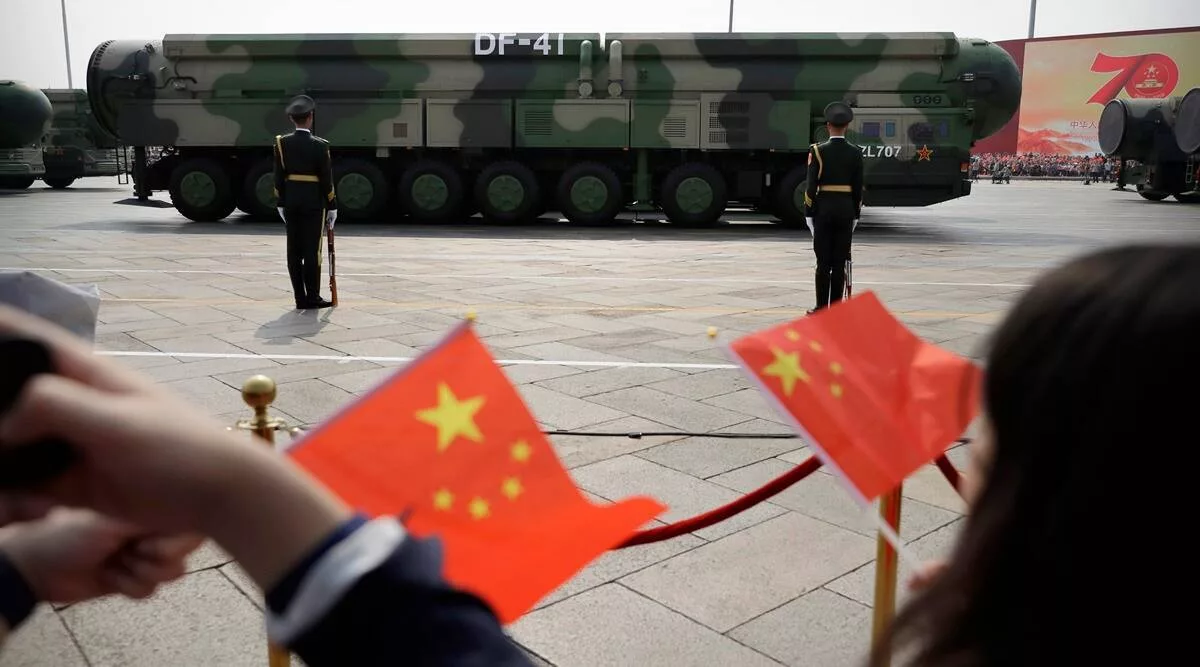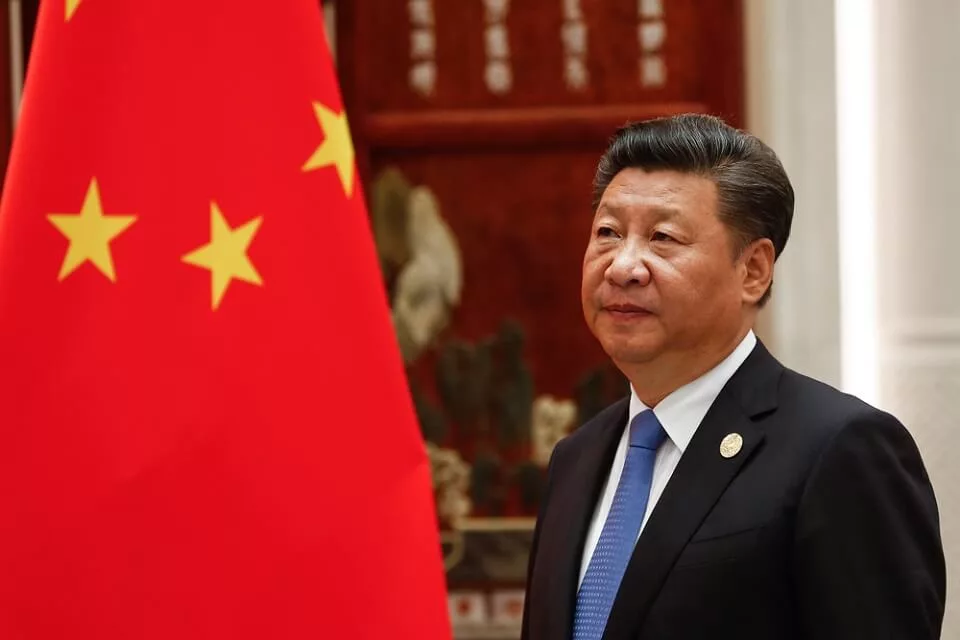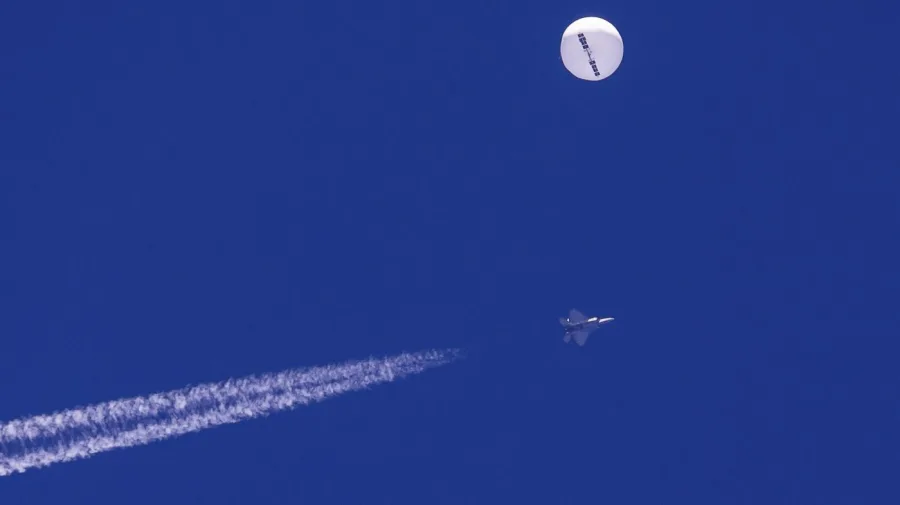“Fears Rise as China Plans to Increase Nuclear Warheads to 900 by 2035 Amid Escalating Taiwan Tensions”
Tensions are expected to escalate between China and the United States over Taiwan, with sources reporting that China is considering increasing its stockpile of nuclear warheads to 900 by 2035. The plan, which has been approved by President Xi Jinping, is part of the People's Liberation Army's efforts to strengthen the country's military capabilities and serve as a deterrent against Washington.

Tensions are expected to escalate between China and the United States over Taiwan, with sources reporting that China is considering increasing its stockpile of nuclear warheads to 900 by 2035. The plan, which has been approved by President Xi Jinping, is part of the People’s Liberation Army’s efforts to strengthen the country’s military capabilities and serve as a deterrent against Washington.
The United States has previously stated that China is expected to increase its nuclear arsenal to 1,500 warheads by 2035, following the modernization of its military. However, experts have raised concerns that if China successfully modernizes its military, it may abandon its “no first use” policy.
The move towards increasing China’s nuclear capabilities has drawn widespread attention, with many eager to see how the situation will unfold in the coming years. As tensions between the two countries continue to escalate, the international community is closely monitoring the situation, hoping for a peaceful resolution.

China’s military recently emphasized the significance of lethal weaponry, with sources reporting that the country is likely to increase its nuclear stockpile in the coming years. In November, the Chinese military’s top leadership acknowledged that Russia’s robust nuclear deterrent had prevented a direct conflict between NATO and Moscow, despite the latter’s actions in Ukraine.
According to projections from reliable sources, China’s number of nuclear warheads is estimated to reach 550 by 2027, marking the 100th anniversary of the establishment of the country’s armed forces. The same sources predict that this number could further rise to 900 by 2035.
Data from the Stockholm International Peace Research Institute indicates that Russia currently has 5,977 nuclear warheads, while the United States has 5,428.
Tensions between China and the United States have been escalating in recent times, particularly following the visit of former U.S. House of Representatives Speaker Nancy Pelosi to Taiwan in August.
Taiwan’s self-ruled democracy has raised concerns of becoming a potential military conflict zone in the Asia-Pacific region. Beijing views the island as a breakaway province that must be reunited with mainland China, even if it means using military force.
Since the civil war in 1949, China and Taiwan have been governed independently of each other.
In 1979, the United States changed its diplomatic recognition from Taipei to Beijing. However, the country still engages in significant, albeit unofficial, exchanges with Taiwan and provides the island with billions of dollars-worth of defence-related arms and spare parts.

According to recent reports, Chinese President Xi Jinping has given his approval for a blueprint developed by the People’s Liberation Army. This move, it is said, is aimed at bolstering China’s deterrent against the United States. Xi Jinping, who also serves as the head of the military, has expressed his eagerness to strengthen Beijing’s stance against Washington. The information was provided by sources within China.
As China continues to assert its claim over Taiwan, concerns are growing that the island could become a military flashpoint in the Asia Pacific region. The two territories have been separate governments since a civil war split them in 1949.
On February 4, US President Joe Biden spoke to reporters about a recent incident involving a Chinese balloon. The President announced that he had ordered the Pentagon to shoot down the balloon. He stated, “On Wednesday, I was briefed on the balloon and I ordered the Pentagon to shoot it down as soon as possible. They successfully took it down over water, outside the 12-mile limit, without causing any harm on the ground.”

Biden went on to praise the actions of the US aviators, saying, “I want to appreciate our aviators who did it. We’ll have more to report on this a little later.” This move by the US government underscores the growing tensions in the region and the potential for military conflict.
The United States Secretary of Defence, Lloyd Austin, has confirmed that a Chinese high-altitude surveillance balloon was successfully shot down by a US fighter aircraft in the waters off the coast of South Carolina. In a statement released on Saturday, Austin revealed that the balloon was being used by China for the purpose of surveiling strategic sites within the continental US. The shoot-down was carried out within US airspace and territorial waters. The US Air Force was able to safely complete the mission, according to the official statement from the US Defence Department.
A report by Pentagon warns that China could have a significant increase in their nuclear arsenal, potentially reaching 1,500 warheads within the next 13 years. The report highlights Beijing’s plans to expand their power and assert more control over Taiwan, which operates as a self-governing entity.
The Pentagon’s annual report to Congress, consisting of 196 pages, sheds light on China’s ambitions to achieve their goal of a “great rejuvenation of the Chinese nation” by the year 2049 through various means, including military and economic expansion, as well as political influence.
According to the Department of Defense (DOD), China’s leaders believe that the United States is deploying a comprehensive effort to contain its rise. The DOD reported that structural changes in the international system and a confrontational attitude from the US are the root causes of the increasing strategic competition between the two nations.
China is attempting to shape the international order around its principles while also building a world-class military with a global network. The country is taking steps to bolster its national defense, with the Pentagon estimating that China’s nuclear warhead stockpile is expected to grow from around 400 to 1,500 by 2035. The country is also on pace to complete the modernization of its national defense and armed forces by the same year.
In addition to expanding its nuclear capabilities, China is also looking to modernize and diversify its nuclear forces. The country is investing in infrastructure to increase its production of nuclear weapons. According to the Pentagon, the People’s Liberation Army, China’s military force, launched 135 ballistic missiles in 2021, firing off more tests than the rest of the world combined last year.
This news raises concerns among US officials, who are closely monitoring China’s military build-up and its impact on international security.
The Department of Defense (DOD) has expressed concern over China’s growing aggression towards Taiwan. Beijing is believed to have several strategies in place, including a full-scale amphibious invasion, which could result in the seizure of parts or all of the island.
The situation in Taiwan has been a source of conflict between the U.S. and China for many years, with Beijing considering the island as a historical part of mainland China. Meanwhile, the U.S. operates under the One China policy, which recognizes Taiwan as a part of China, yet maintains informal ties with the country.
Nancy Pelosi, Speaker of the House of Representatives, made headlines in August as she visited Taiwan with a group of congressional delegates. The move was seen as a demonstration of support for the island nation, which has long been a topic of controversy in international relations.
Pelosi’s visit coincided with an increase in Chinese military drills, which many saw as a response to the Speaker’s high-profile trip. This sparked a larger discussion about the role of the United States in defending Taiwan against potential aggression.
Earlier this year, President Biden made statements that hinted at a potential military defense of Taiwan. However, the White House has since clarified that no such decision has been made. The situation remains a delicate one, with both nations closely monitoring developments.
President Biden recently held a meeting with Chinese President Xi Jinping, during which both leaders affirmed their commitment to preventing a new “Cold War” amid increasing tensions and competition. This report comes as widespread protests break out in China, as citizens voice their discontent with the strict COVID-19 policies implemented by the Chinese Communist Party (CCP).
Some of the protesters are even calling for Xi’s resignation, marking the largest opposition movement the CCP has faced in recent years.
The following Pentagon report was published in November 2022.
Edited by Prakriti Arora




